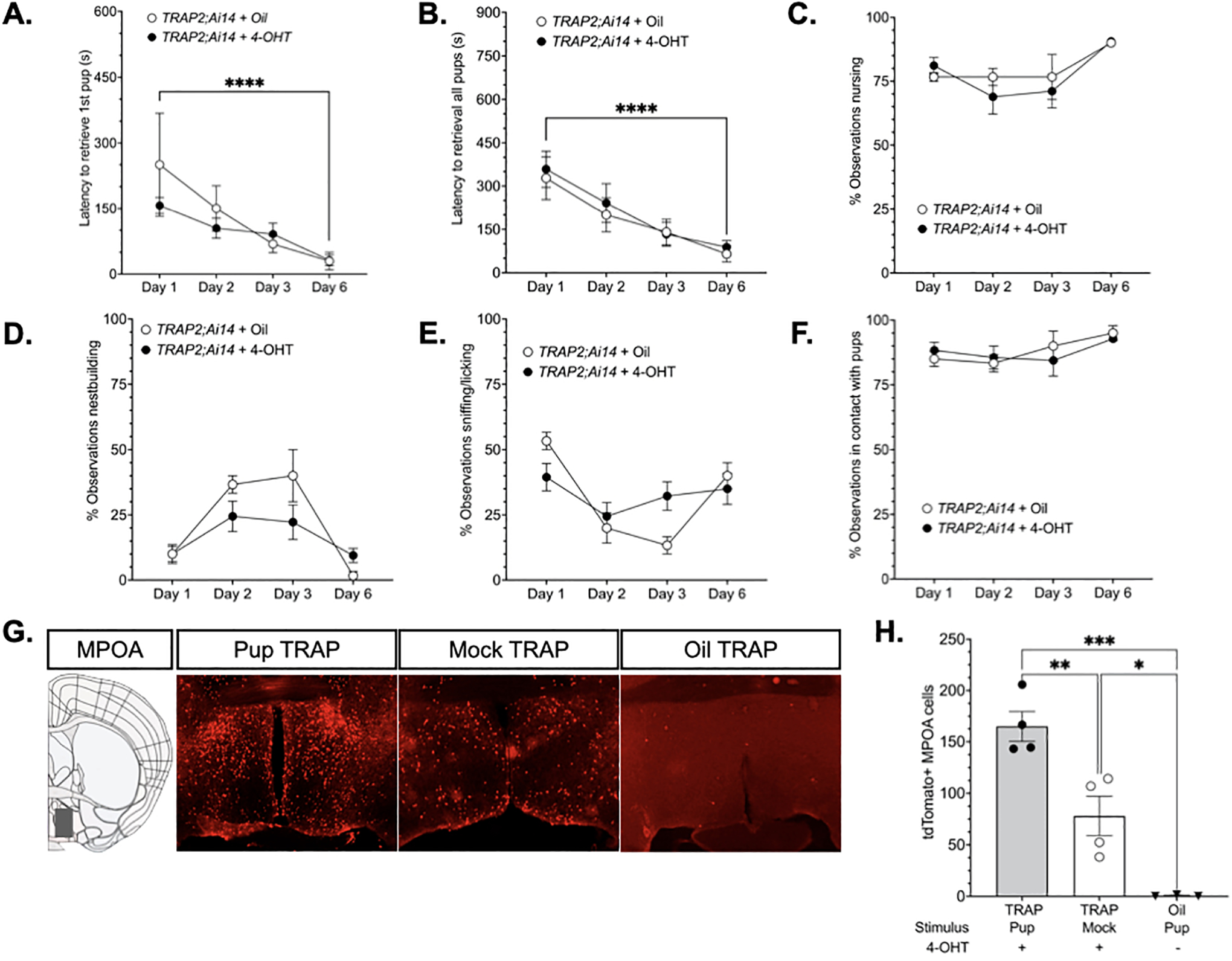Figure 3. TRAP2;Ai14 Model Validation.

The results of two validation experiments are illustrated. The first experiment tested whether 4-OHT injection (N=9) following an initial pup exposure produced alterations in caregiving behavior relative oil-injected (N= 3) mice on test days 2–6. 4-OHT and oil-treated groups did not significantly differ on any measure. Latencies initiate (A) and complete pup retrieval (B) declined from day 1 to day 6 (p<0.0001, d=3.87; p<0.0001, d=14.27, respectively). Time spent in nursing postures (C) and nestbuilding (D) varied by day, however the differences between day 1 and day 6 did not reach statistical significance (p=0.112, d= −5.31; p=0.8645, d=1.19, respectively). The percentage of observations sniffing/licking (E) or in physical contact with pups (F) did not significantly vary by group or day. The second validation experiment tested whether 4-OHT injection sufficiently TRAPed cells activated by pup exposure in the medial preoptic area. Representative photomicrographs of tdTomato expression in the MPOA (G). Quantification of tdTomato expression in 4-OHT treated mice that were given mock (N=4) or pup exposure (N=4) and oil-treated mice (N=3) exposed to pups (H). ****Significant effect of time, Day 1 v. Day 6, p<0.0001;***Significant main effect of group on tdTomato expression, p<0.0003; ***pup TRAP v. Oil TRAP, p<0.0003;**pup TRAP v mock TRAP, p<0.0093; *mock TRAP v oil TRAP, p<0.0265. All p values adjusted for multiple comparisons.
